The 3500 km tour through Japan
With a freshly authorized Japan Rail Pass (which can be obtained only outside of Japan and is valid for one or two weeks) we started early Monday morning with the Shinkansen (Hikari) from Tokyo station.
Der Hikari ist der mittelschnelle Zug; der Nozomi ist schneller, aber nicht im Railpass Preis inbegriffen;
der Kodama ist der langsamste und benötigt für die Strecke Tokyo-Osaka vier anstatt zwei Stunden;
die Geschwindigkeiten liegen bei allen zwischen 270 und 300km/h, aber die Zahl der Haltestellen ist unterschiedlich;
die Zugfrequenz geht hinunter bis auf 5 Minuten, der Aufenthalt an den Stationen ist genau 3 Minuten;
jeder der 16 Wagen faßt 100 Passagiere;
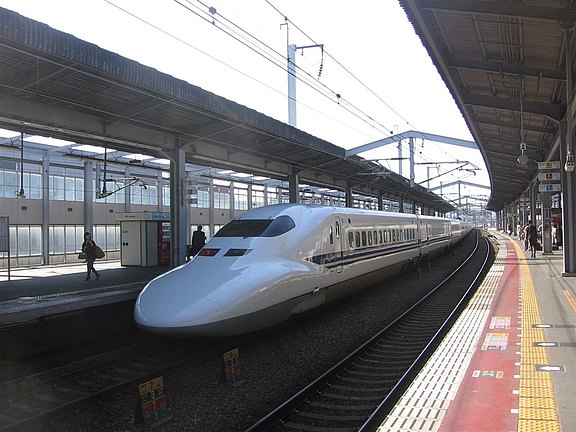
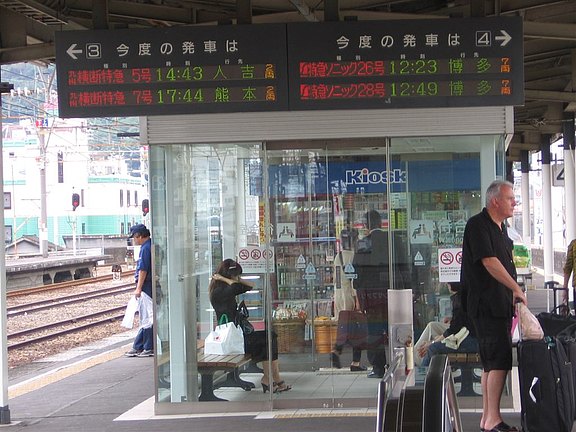
die Ansagen/Anzeigen sind Japanisch/Englisch und im Süden auch Chinesisch/-Koreanisch – Taiwan und Korea sind nah;
Verkaufswagen mit Snacks und Getränken zu moderaten Preisen rollen pausenlos durch die Gänge, oft mit landesteilabhängigen Spezialitäten;
Toiletten sind westlich und Japanisch, die Japanischen sind häufig nicht verschließbar, da die Pendeltür den Blick auf Beine und Kopf ermöglicht, d.h. es ist zu erkennen, ob bestanden ist oder nicht).
Of course we had reserved non-smoking seats. 50% of the cars are not reserved; two or three cars are (still) smoking cars. Within three hours we rushed the 600km to Shin-Osaka (Osaka’s Shinkansen station), and then continued our tour for the next 600km to Hakata/Fukuoka on Kyushu island with another Hikari (the Nozomi goes on with no changing of trains). After a short distance (200km) by a standard train (along the rails the newly built Shinkansen tracks can be spotted already) we reached Yatsushiro, where we got on the newest Shinkansen, which brought us to most Southern city of Kyushu, Kagoshima, within 30 minutes.
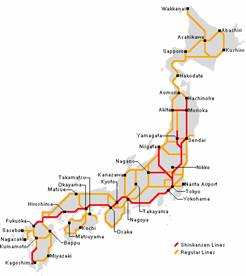
After on night at a Ryokan in Kagoshima (? accommodations in Japan) in the shadow of mount Sakurajima, the most active volcano in Japan, and after several garden sightseeing tours (for example the Senganen) by very hot weather and high humility we set off late in the evening for Beppu, the Onsen city (? Onsen – Japanese Bathes) located at the east coast of Kyushu in about 200km distance.
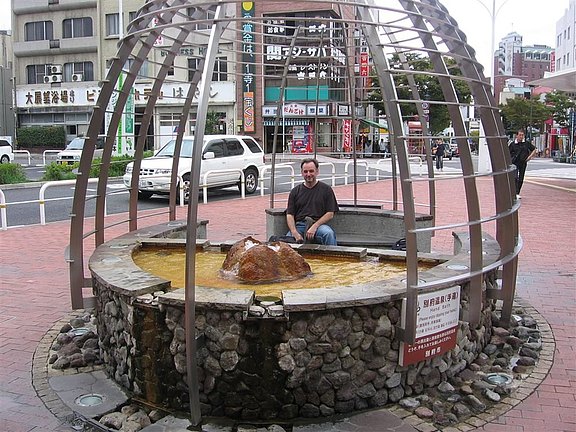
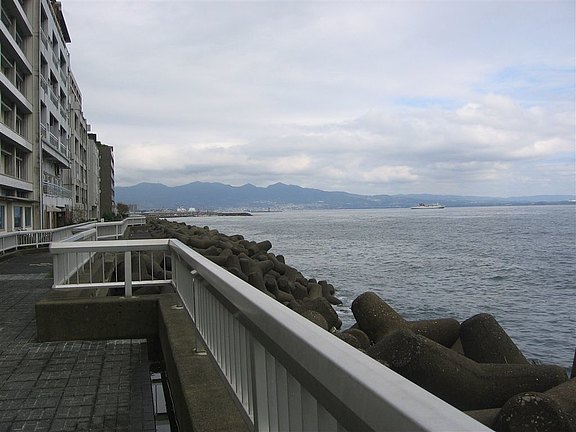
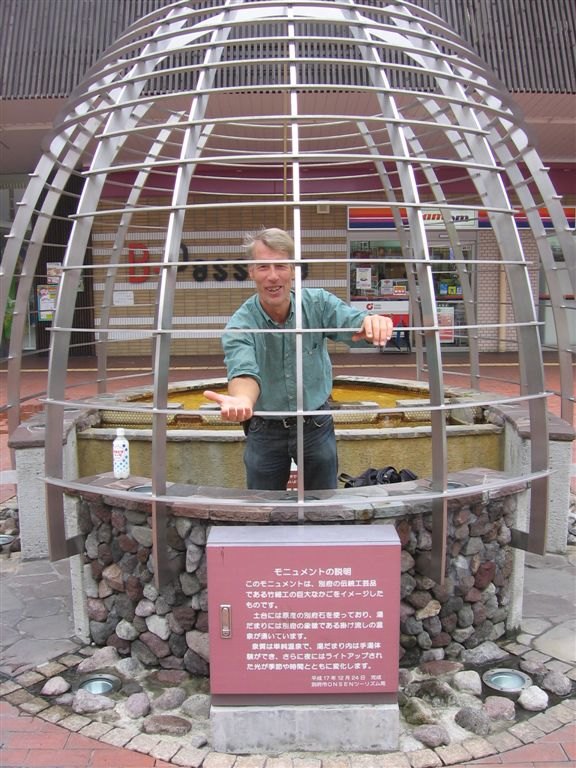
From Beppu we went again in Northern direction to the main island, Honshu, and via Hakata and Hiroshima we reached this day’s destination, Okayama. After one night at the night-life district (further report on this issue will not be provided! …) we visited Okayama castle or the ‘Craw Castle’ (because of the black coloring), which was built in 1597, destroyed in World War II and reconstructed in 1960, and the Japanese style landscape garden Korakuen, which was built in the 17th century (? Japanese Gardens).
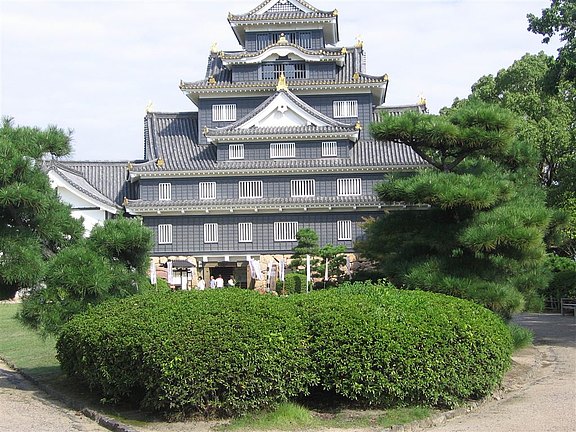
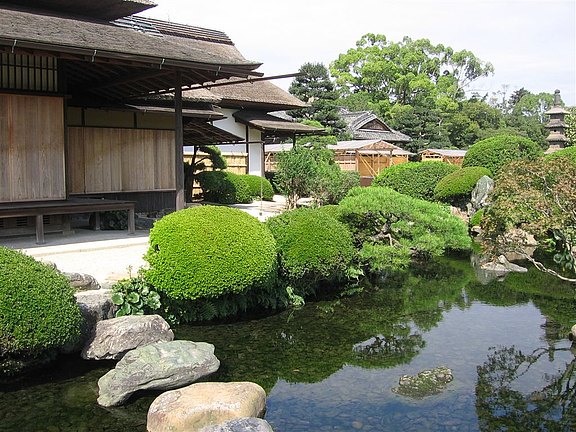
At Himeji station we left the train only for a short stop to visit the largest Japanese castle, Himeji Castle. The construction of Himeji Castle started in the 14th century, and the castle was enlarged continuously until the completion in 1609. She is preserved in her original form as war, earthquakes or fire never destroyed her –unlike so many other castles in Japan.
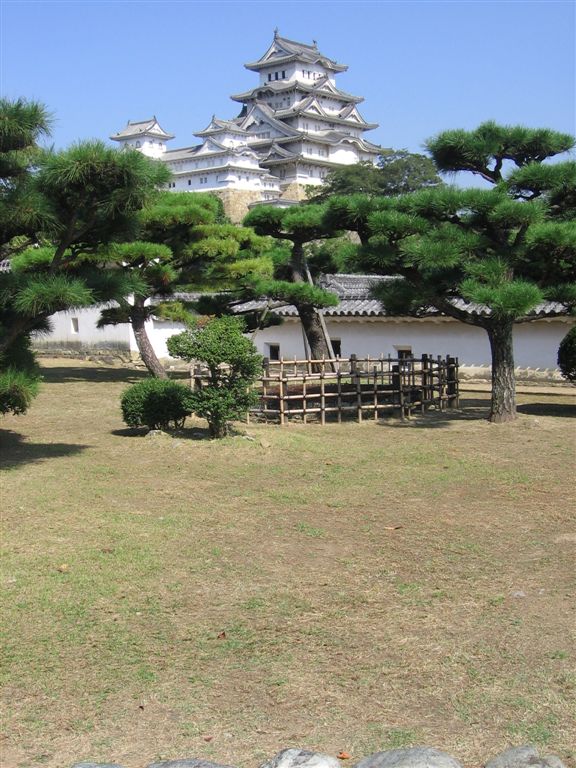
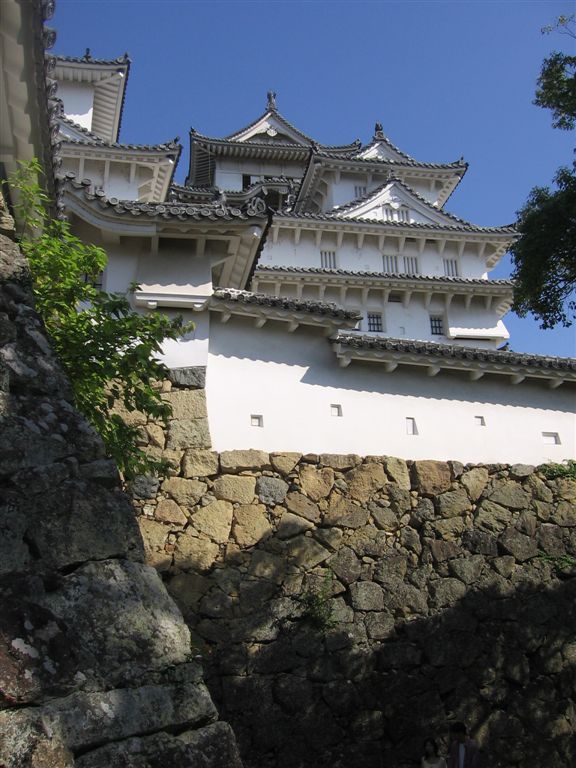
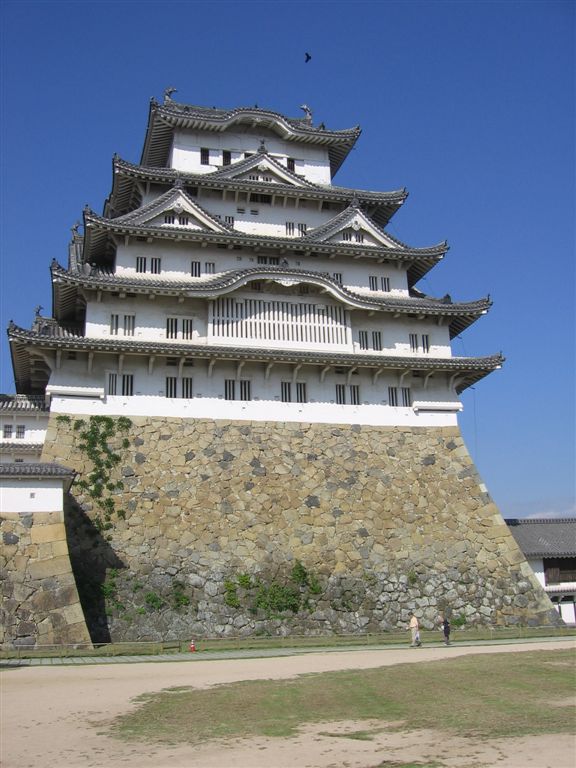
After a three minutes stop at Shin-Osaka station we went on to our last destination, Kyoto, where we stayed for the last three days.
For visiting the most important of the various temples, shrines and gardens (? Japanese Gardens) in Kyoto we used a round tour bus in the beginning, but later we hired bicycles and rushed along the mostly spacious pavements like the locals.
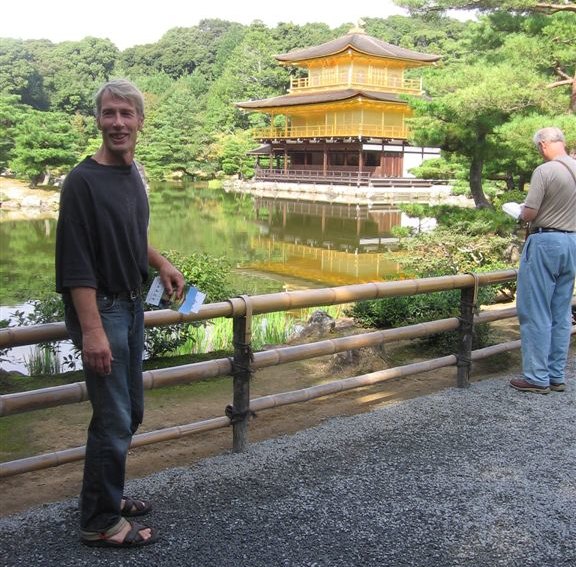
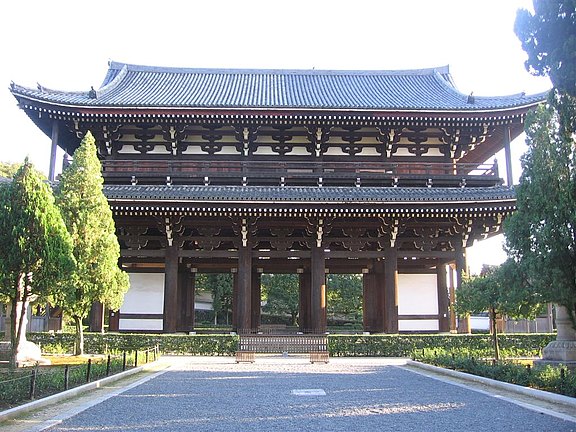
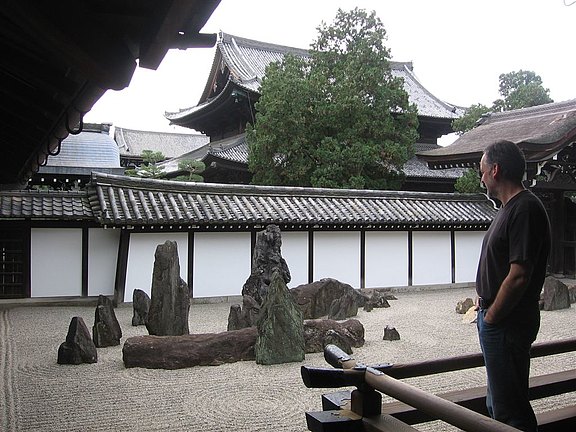
By a day trip we reached Nara within 30 minutes from Kyoto by JR. Nara was the first permanent emperor city in the year 710, but she lost her status already in 784 to Nagaoka, because the Buddhist’s monasteries in Nara became too strong.
Nara, too, is littered with shrines, Buddhism temples (for example the huge Todaiji with Japan’s largest statue of Buddha and the Horyuji with the oldest wood constructions in the world) and gardens.

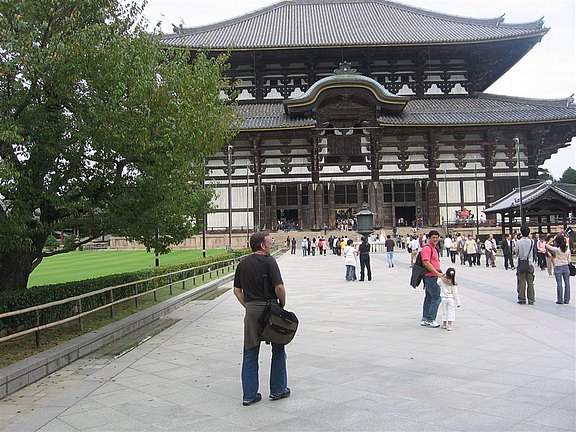
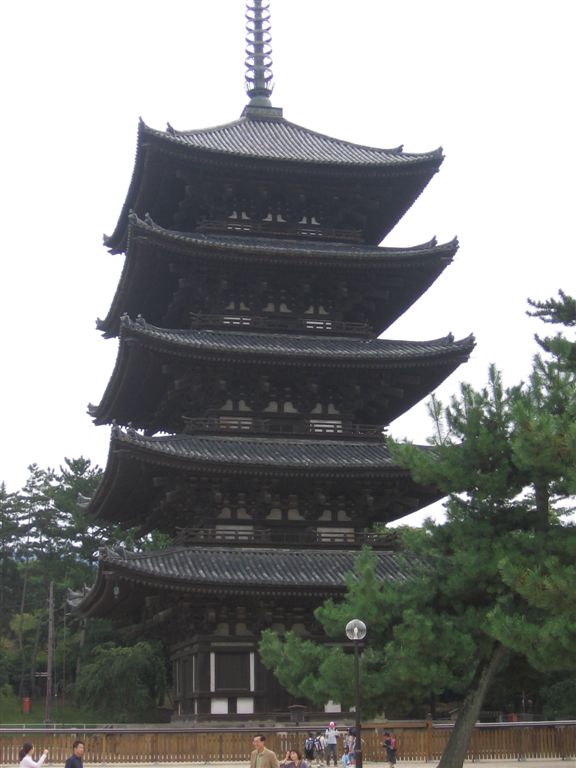
The Nara Park is not only crowded by people but by deer running freely and begging quite aggressively for food. These deer are considered as messengers of God in the Shinto belief. A heroic encounter of Peter with an obstinate roebuck, which, luckily with cut horns, obviously considered him as hiding food or being a roebuck rival, was not documented by the perplexed cameraman (who was preparing for the worst and for an intervention).
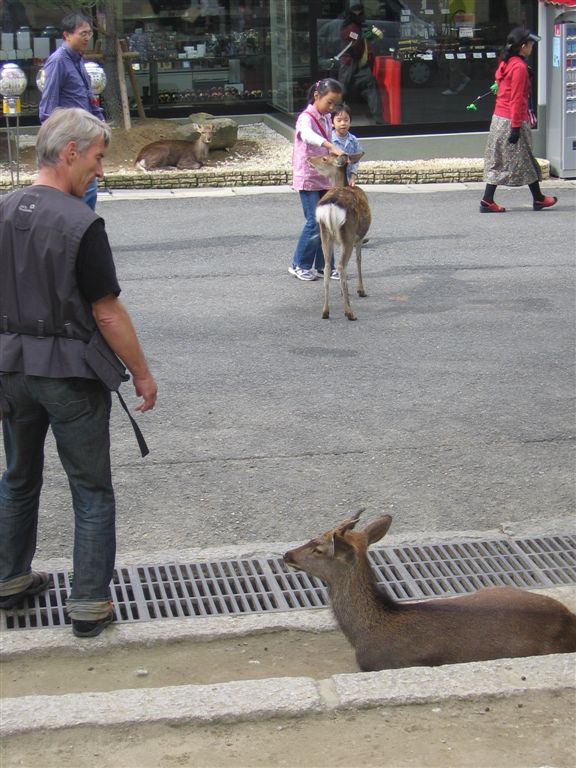
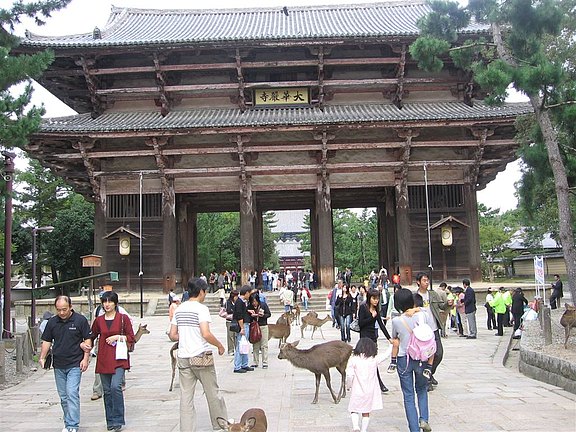
On Sunday evening the week was gone in a hurry, and we returned to Tokyo (after three hours riding by Shinkansen from Kyoto).
Thanks to the Rail Pass we went free of charge by all JR trains, including seat reservations in most trains (except Nozomi). Therefore, very often we had the nice feeling of being some kind of privileged luxury passengers – sometimes it’s so easy to buy a little happiness. Unfortunately the Rail Pass was expired after one week, and we were standard passengers at the file in front of the ticket machines again.
C & P